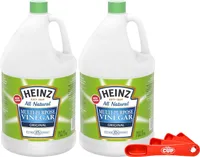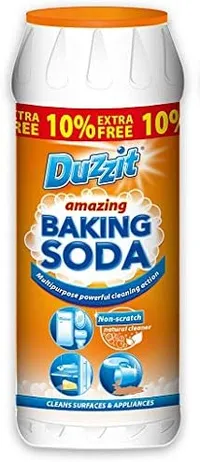A complete guide to stain removal – top tips on when, how and what to blot with
Stain removal: treat red wine or chocolate stains on clothes, blood on the carpet, ink on your leather seats and more with our top tips and advice

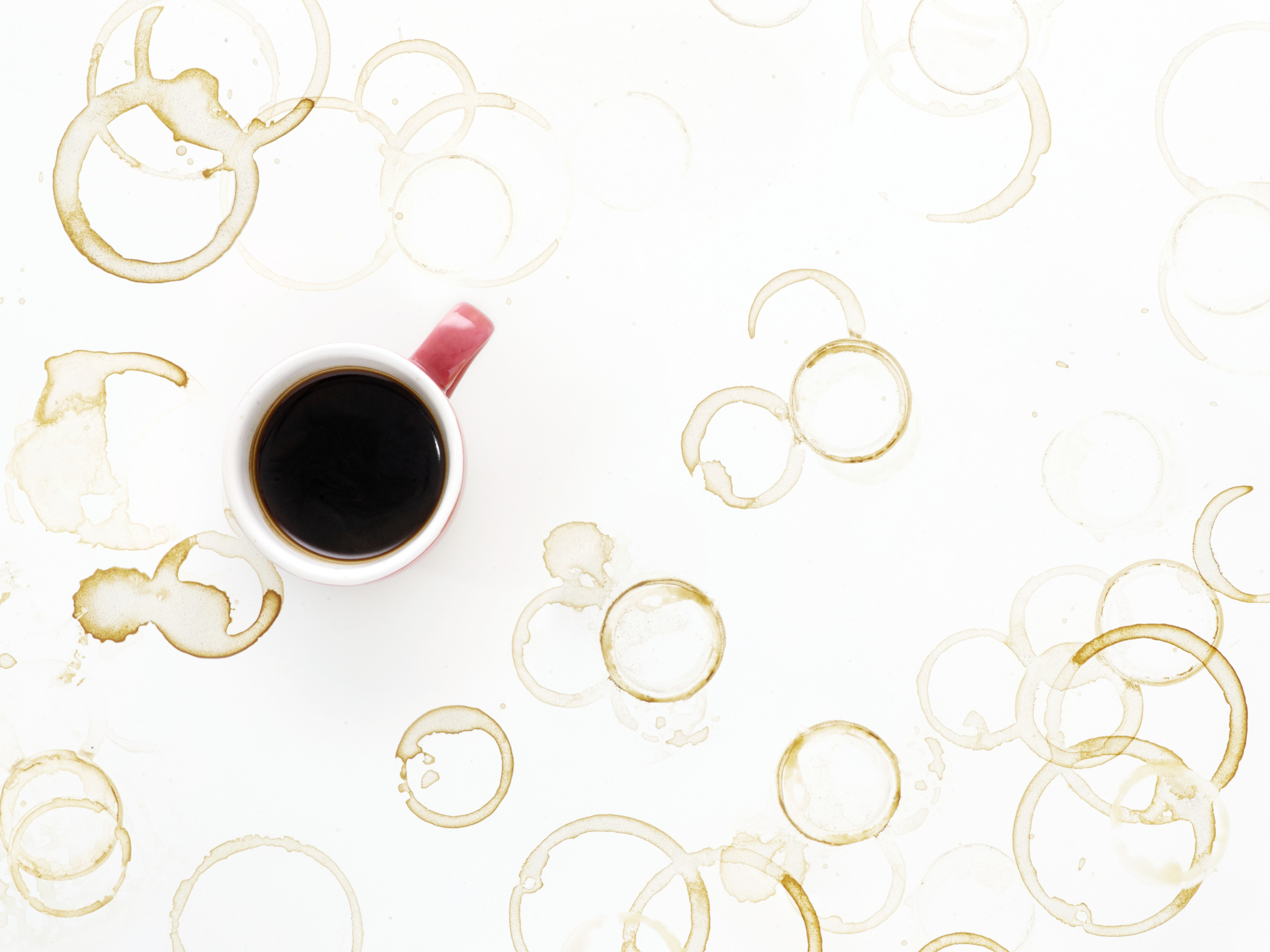
Spills, accidents and often a little ignorance happen, it's just a part of life, and unfortunately, stains are often the outcome. Rather than to induce sheer panic, we’re going to share the basics of stain removal with you, and by that we mean the key to removing stains successfully.
From treating blood on the carpet, to chocolate on clothes, stains on leather and more, we have got you covered. Many of these solutions may come as a shock, but you can often treat a stain and save your carpet, mattress or other area of your home from a lifetime of being off color by using natural ingredients like baking soda, vinegar and lemon juice, along with the right technique.
Can any stain be removed?
Unfortunately no, we are not wizards to that extent. Accidents such as iron scorch marks can often be permanent, especially if untreated right away. The lesson here is to simply act quickly and correctly.
- See our complete guide to cleaning upholstery like a pro at home.
Our favorite stain removing agents to keep handy
To treat whatever type of spill threatening to stain your items, be them clothes and upholstery or furniture, stay stocked up on at least a couple of these stain removing household ingredients and commercial products so that you can act fast when you need to. Paper towels, a blunt knife/scraper and a vacuum are also really useful to keep close by.
- This is how to clean a carpet if that's where your stains are at.
- Water: You'll need this for every single stain, either hot, cold or frozen. Default to lukewarm/cold water in our stain removal methods below unless the temperature is indicated.
- White vinegar: Totally natural but beyond powerful in the world of household cleaning. People clean with vinegar as it is an astringent with anti-bacterial properties also. It is usually used diluted with hot or cold water – one cup in equal parts – as using it neat can actually be too harsh for some materials and fabrics.
- Baking soda: Bicarbonate of soda will also work if that's what you have to hand. Baking soda helps cleanse and becomes effervescent, especially when mixed with vinegar, which causes a little corrosion to help lift stubborn colors from staining. It's often mixed with a little water to form a paste, sprinkled directly onto the surface in question, or used in tandem with vinegar for more lifting action.
- Lemons: Life's natural bleach, lemon is a great disinfectant and helps lift color also. We use a lot of lemons at Real Homes!
- Salt: Ideal for absorbing liquids like red wine before it sets, giving you more time to treat stains. Ideal also when used in laundry as a mild corrosive to lift grass stains and the likes. You can also use cornstarch or talcum powder in the same way.
- Dish soap: You're always going to have Dawn or another dish soap to hand and it's really useful to combat grease stains and more you'll find in condiments like tomato ketchup, mustard and the likes.
- Rubbing alcohol – Something we are now more likely to have at home and not only is it a quick way to disinfect, but it can also remove coffee or tomato stains from plastic, and chemical-based stains like pen ink and dye.
- Hydrogen peroxide: A little more harsh but this milder form of bleach is effective when used on clothes and to remove rust from metal stains or other similar levels of discoloration elsewhere around the home.
- Household stain remover: Keeping a box of Vanish or Tide handy is a really good idea to keep whites white, especially if you have kids or pets (or both!) around.
- Acetone/nail polish remover: If it can take off nail polish, it can tackle stains.
- Ammonia and bleach – We tend to recommend the above less harsh stain removers ahead of ammonia and bleach, but they do work. Never mix them together (goes for all chemical cleaners in fact) and you'll want to dilute these – one cup ammonia to one cup water and 10ml bleach to 1litre water – before use.
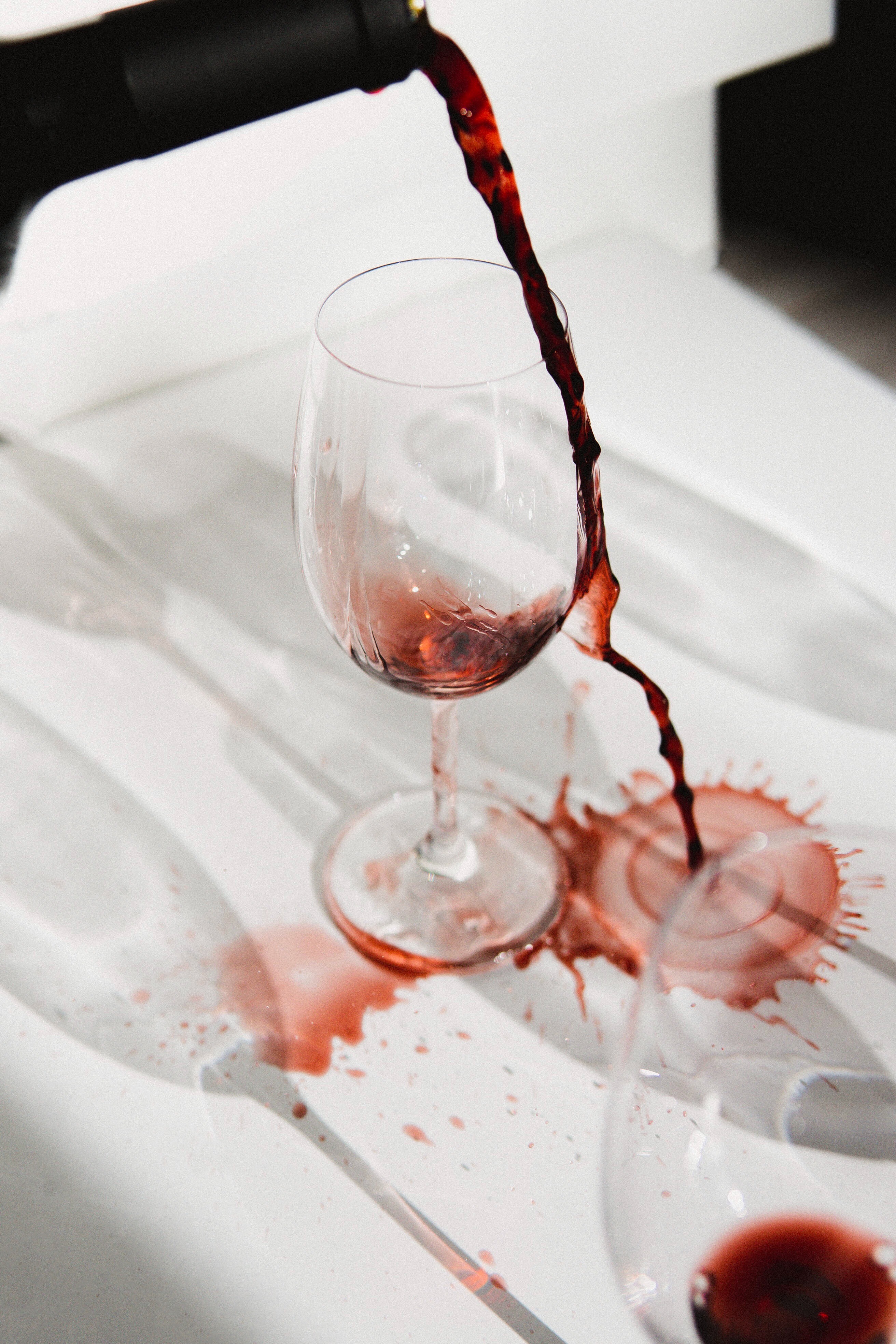
Common stains and how to treat them
Blood on the carpet or on your mattress
Cold water and salt: Mix, spray, blot, rinse, repeat.
Water mark stains on wood
Get small space home decor ideas, celeb inspiration, DIY tips and more, straight to your inbox!
Mayonnaise: Leave it on overnight and buff it in int the morning.
Red wine on a rug or upholstery
Club soda: Blot with kitchen towel or absorb with salt. Cover and flush with club soda, repeat.
Coffee on the couch
Lemon juice: Blot gently then mix 2 c. lukewarm water with 1/4 c. lemon juice. Add a little dish soap for more oomph and dab gently. Rinse, repeat if needed.
Grease on clothes or car seats
Cornstarch: Apply it over the stain, overnight if possible/needed. Then dab with a dish soap and water solution using a clean rag. If working with leather stains, apply a leather conditioner to finish with.
Chocolate on clothes and bedding
Dish soap + hot water: Scrape off the excess, then dab with your dish soap solution using a clean rag. Flush the underside with hot water.
Organic stains – urine, vomit and caca
Bleach: Scrape/absorb any excess, flush the back of the fabric/area with hot water for faeces but cold water for the others, use a diluted bleach solution, flush, use hot water to rinse and repeat if needed.
Tomato sauce, mustard and other condiments on clothes
Vinegar: Flush with a vinegar solution, blot with a clean cloth and dish soap solution until fully removed. Repeat if needed.
Pen and ink stains on whiteboards and upholstery
Rubbing alcohol: Blot with rubbing alcohol then pre-treat with a stain remover before hot washing. According to Ocean Free, a UK-based manufacturer in hand sanitizers, 'The horror of a permanent marker on a home school whiteboard need not be cause for concern. Wiping off with hand sanitiser can remove all traces – even if you do need to repeat the process to remove all traces. '
Treating grass stains
Whether the kids enjoy sport-based activities, or you've enjoyed an alfresco picnic, these verdant stains can be so annoying. Luckily, Sophie Beckett-Smith, washing machine expert at AO.com has some top tips to get rid of those chlorophyll green scuffs.
How to:
- Start by pre-treating the stain with either a stain remover or laundry detergent making sure to add a concentrated amount to the affected area. Do this as soon as possible and gently work this in with your fingers or a soft bristle brush.
- Then rinse the garment completely either in the sink or shower before soaking the clothing in warm water for one hour. Once the time is up, rinse the garment again until the stain is either gone or less visible.
- After this, pop the piece of clothing into the washing machine, checking the instructions on the item’s label to ensure it is washed at the correct temperature. In fact, some washing machine models now have a unique anti-stain technology which adds an extra wash to stubborn spots, even at lower temperatures – perfect for those who love the outdoors!
- For tougher stains, sponge the area with alcohol and then blot with a clean towel. Continue until there is no more colour transfer and then rinse completely before putting into the washing machine for a final clean.
Sweat stains on white clothes
Hydrogen peroxide: Flush with vinegar solution then dab with hydrogen peroxide and finish on a hot wash.
Crayon and slime
Baking soda: Scrape off the excess then dip a rag in baking soda and rub it over the stain. Spray with white vinegar for extra potency, rinse and launder on a hot wash.
Oil-based paints
Acetone: Flush with acetone, dab with a dish soap and water solution. Pre-treat with stain remover if not totally lifted and hot wash.
Water-based paints
Cold water: Flush with cold water, use your dish soap solution to dab the area and cold wash to finish.
Chewing gum stains
Ice cubes: Freeze the top, scrape, dab with a dish soap and warm water solution.
- Check out how to clean paint brushes too if that's part of your pickle!
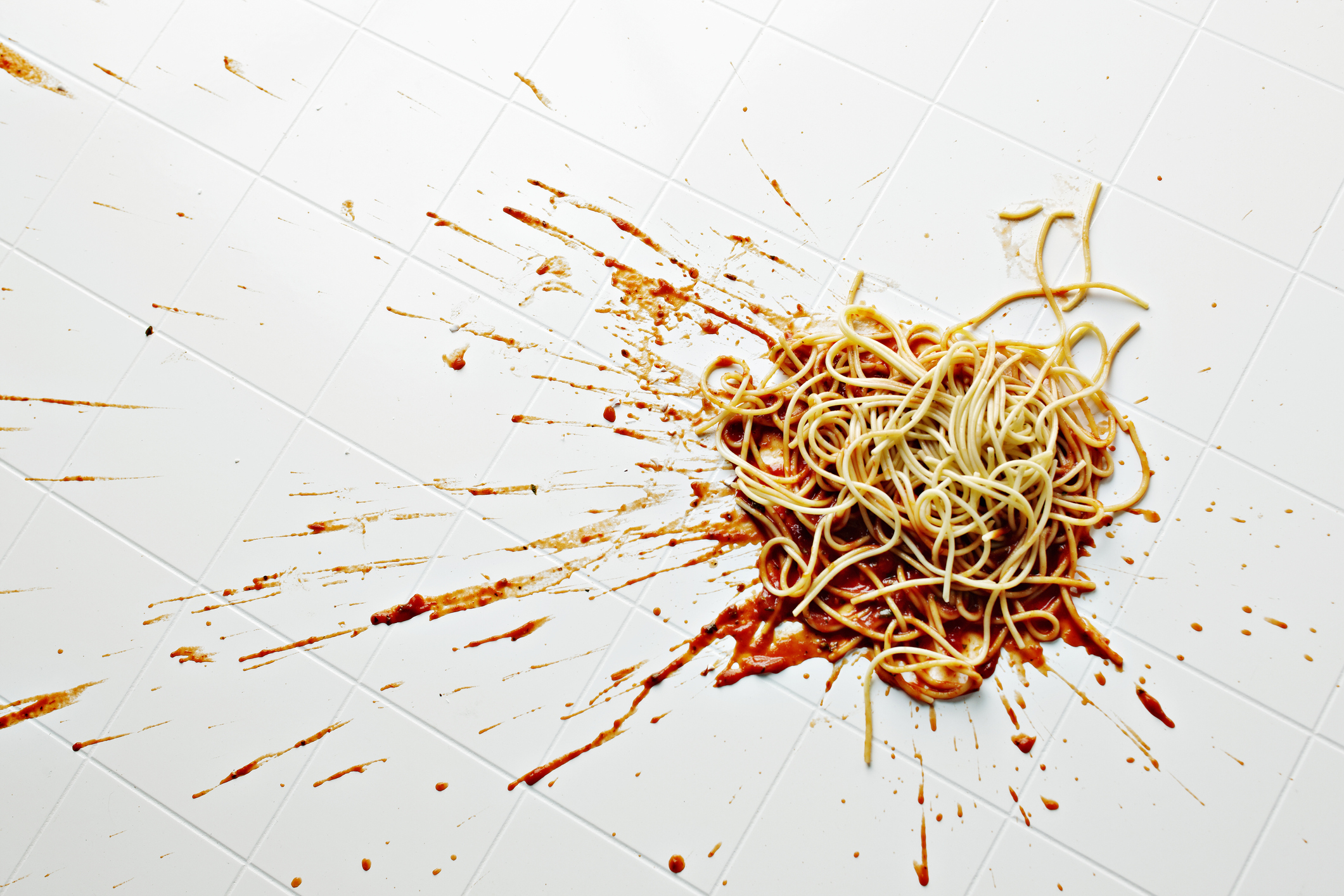
- Cleaning a mattress in particular? We can help.
Stain removal tips
- Be prepared: As mentioned, keep a few of our favorite stain removers to hand and make sure your vacuum is working well too. Consider even a wet/dry vacuum if your household is more often than not treating wet stains like vomit.
- Act fast: Old stains are much harder to treat. Spot and blot people, spot and blot.
- Spot test treatment: Especially if using solvent methods on stains, try it out on a small inconspicuous area before rolling it out onto the rest.
- Know your fabrics: Read any labels available before treatment and remember that cleaning leather is very different to treating stains in cotton. Know also if working with laundry whether your garments are colorfast or not.
- Prevention is key: This seems all too obvious, but it's true! If stains keep happening in the same place, it's time to put some solid preventative measures in place like shoes off as soon as you come home, and no coffee on the couch if excitable kids are around.
Shop Heinz All-Natural Distilled White Vinegar -1 Gallon Bottle (Pack of 2) with By The Cup Swivel Spoons
A must for natural cleaning around the kitchen and beyond.
Duzzit Baking Soda 550g, Non Scratch Multipurpose Powerful Cleaning Action.
A hero product in the world of natural cleaning.
Spot and blot people 🥤

I'm Cam, the former deputy editor of Real Homes who worked on the site from 2020 to 2023. As a renter myself, sharing a home with two friends (and my cat) in London, I know all too well the challenges that this can pose when it comes to creating your perfect setup. As someone who has always loved everything interior design-related, I cannot rest until a home feels right and I am really passionate about helping others get there too, no matter what their living situation, style, or budget may be. It’s not always the easiest to figure out, but the journey is fun and the results are so worth it.
After interior design, travel, art, and photography are my next big passions. When I’m not writing or editing homes content, I’m usually tapping into other creative outlets, exploring galleries in London or further afield, taking photos, scribbling, or drawing!
